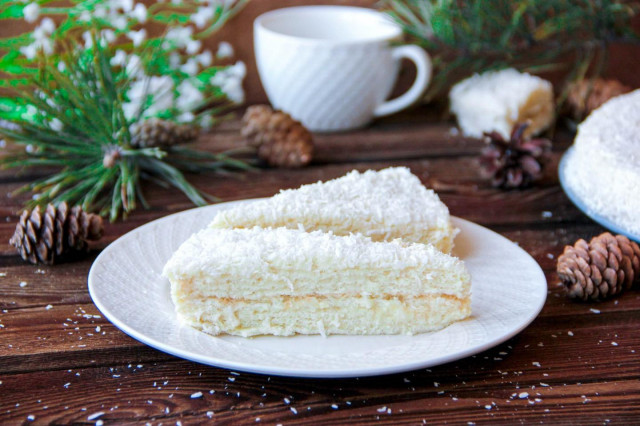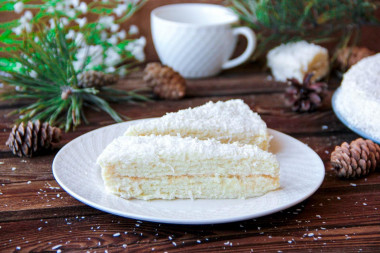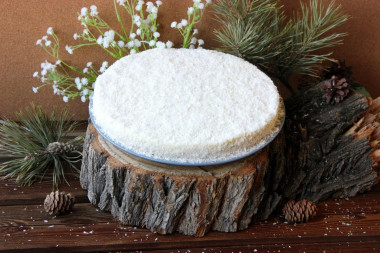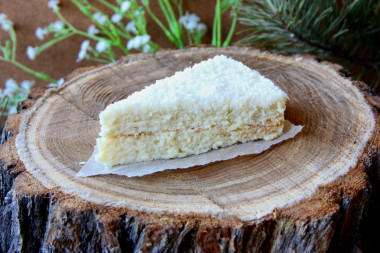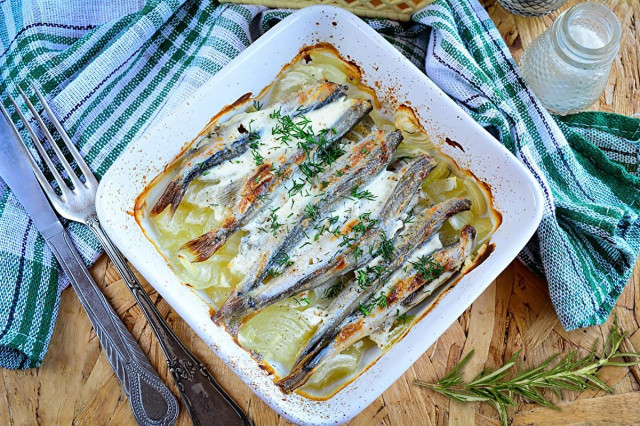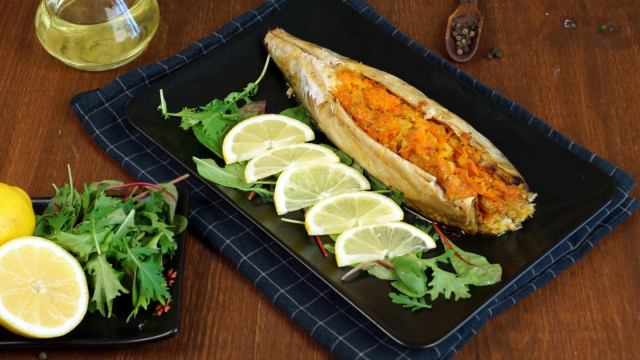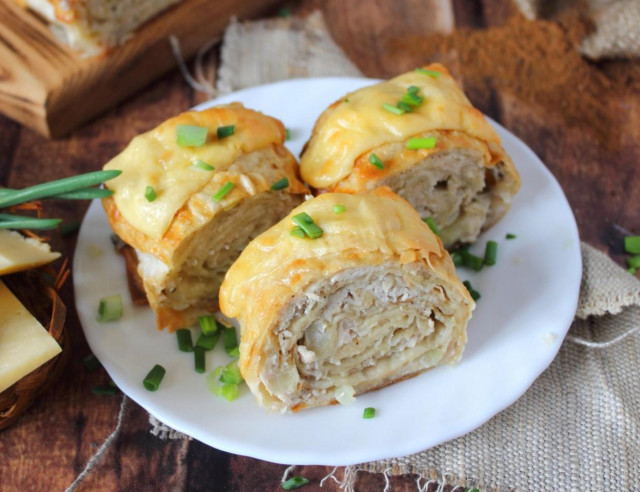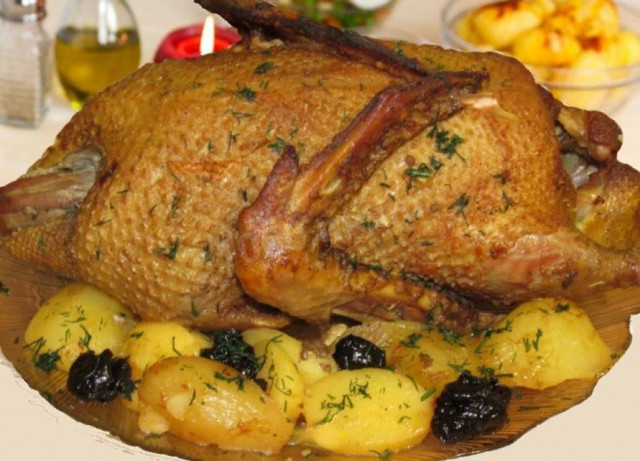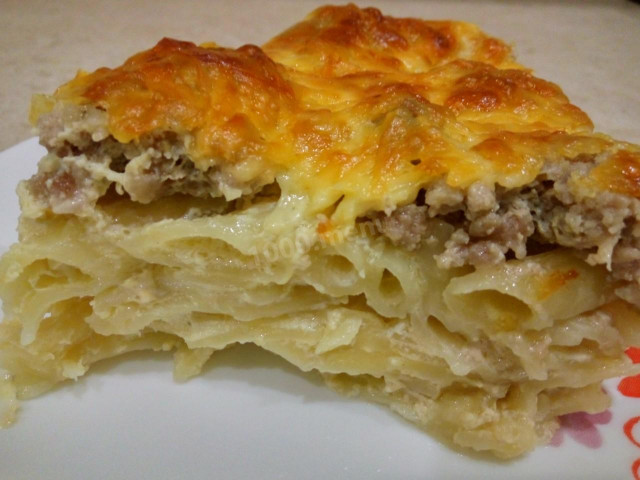Composition / ingredients
Step-by-step cooking
Step 1:
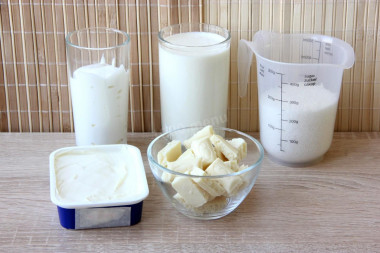
How to make a cake with coconut chips? First, prepare the products for the cream. All ingredients, except coconut chips, should be taken out of the refrigerator just now. Cream cheese is better to take soft, curd cheese. Take cream for whipping, at least 33% fat content. Sour cream - any, I have 15%. Coconut chips - in closed bags / it easily absorbs odors/, white color.
Step 2:
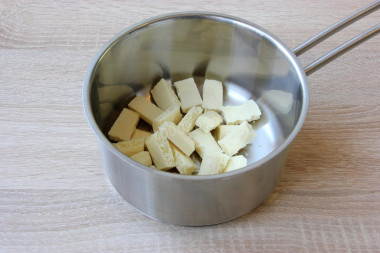
Prepare the white cream. To do this, chop the white chocolate, put it in a saucepan. Add 2 tablespoons of cream from the total volume to the chocolate and melt it in a water bath, stirring.
Step 3:
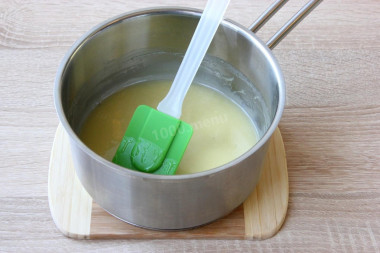
Liquid chocolate should become homogeneous. Let it cool to room temperature by removing the saucepan from the stove.
Step 4:
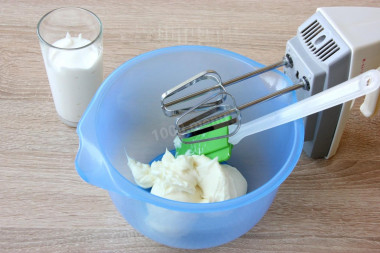
In a separate bowl, mix cream cheese and sour cream, beat with a mixer until smooth at low speed.
Step 5:
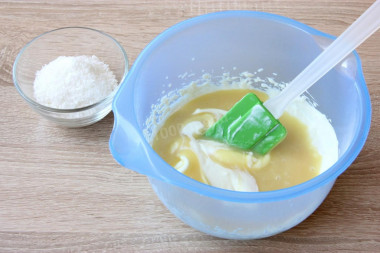
Add the cooled, soft chocolate and coconut chips to the whipped mass. Mix the mass with a spatula.
Step 6:
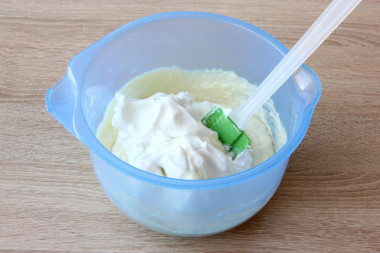
In another / high and well-cooled / container, whisk the cooled cream until fluffy. If the cheese was salty, you can add 2 tablespoons of sugar to the cream. Taste everything so that you like it. Beat first at low speeds, then add power. Add the whipped cream to the cream and gently mix with a spatula to one side.
Step 7:
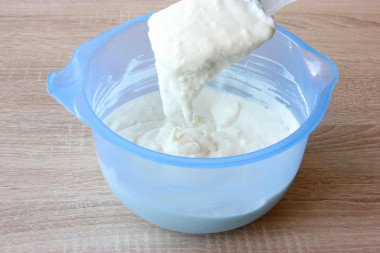
The finished cream will be white, homogeneous, with grains of coconut. The texture is like a thin sour cream - it pours well and spreads. The taste is delicate, sweet, but not cloying. Cover the cream with a film and put it in the refrigerator, in the cold it will become a little thicker.
Step 8:
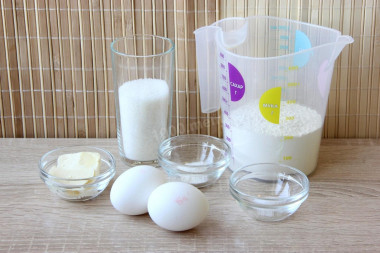
Prepare the products for the test. Remove the eggs from the refrigerator in advance. Take slightly sweet butter, flour - of the highest or first grade.
Step 9:
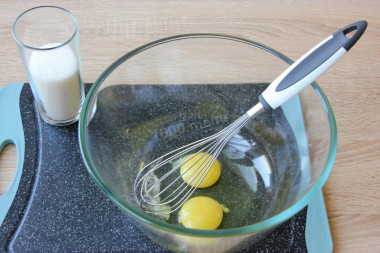
Start preparing the dough for the cakes. Beat the eggs into a bowl. Add a pinch of salt and sugar to the eggs, and beat with a whisk until smooth, no more.
Step 10:
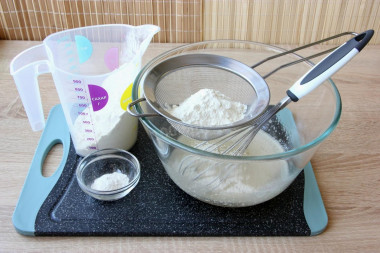
Then mix the flour with baking powder and sift into the egg mass. Knead a homogeneous dough with your hand. Focus on its consistency, and not on the volume of added flour - it may take you more or less.
Step 11:
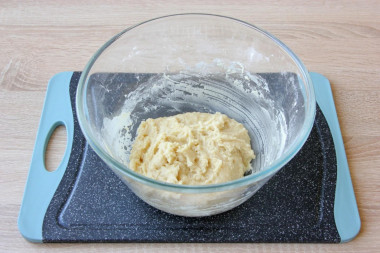
The dough should not be too steep and very sticky. Cover the bowl with it with a film, put it in the refrigerator and forget about it for 3 hours. Sometimes there is no time to wait so much, I boldly leave the dough at this stage together with the cream for the night. Why wait so long, what does it give? - The dough becomes denser and freezes, then it is easy to roll it out without extra flour. Is it possible to do 1 hour? - I admit that it is possible, but I haven't tried.
Step 12:
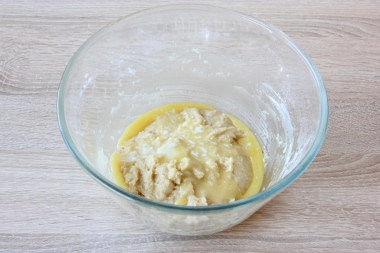
3 hours later. Melt the butter and cool it slightly. Add the melted butter to the dough. Knead the dough well with your hand in a bowl and voila, the dough almost does not stick!
Step 13:
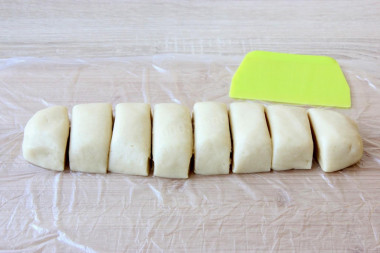
I didn't get a lot of the finished test, only 463 g. I divided it into 8 parts of 57-58 g. You can divide it into 6 parts, i.e. how many cakes do you intend to make. Leave 2 pieces, cover the rest with a film and put it in the refrigerator for now.
Step 14:
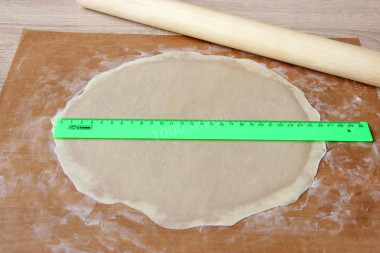
Dust the parchment or baking mat with flour, a piece of dough and a rolling pin also lightly dust. And roll out the dough very thinly, in 1-2 mm, it will be almost transparent. For many, this stage is difficult, especially for novice cooks. Nothing, the dough can be reassembled into a bun and try again and again. The dough is very plastic, it rolls out easily.
Step 15:
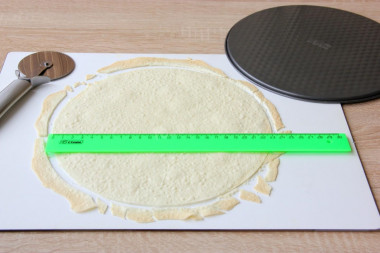
Directly on the parchment, transfer the cake to a baking sheet and bake in a preheated 180C oven for about 3-5 minutes. Take it out immediately, as soon as the edges are slightly gilded. The cake itself should remain white. Instantly cut it into the shape of the size you need, I took the bottom from the detachable mold d 23cm. The cake will almost immediately become brittle, like waffles, leave it to cool where it was cut and start rolling and baking the next ones.
Step 16:
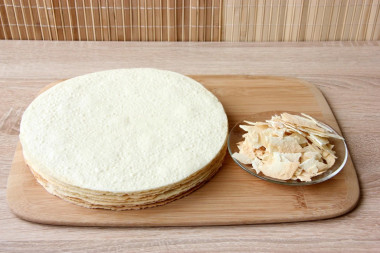
Bake 1 cake at a time, top-bottom mode, at an average level. But focus on your oven. In addition to a stack of cakes, you will also get a certain amount of scraps. They can be crushed and used as another cake / preferably in the center /, add to the cream or sprinkle the cake on top. Any option of your choice, I have clippings in the center.
Step 17:
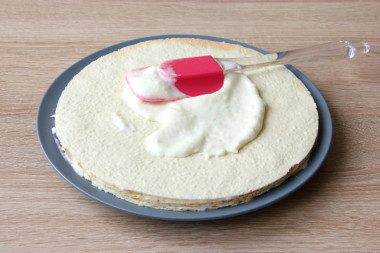
Get busy assembling the cake. Put a little cream on the bottom of a flat dish, it will fix the cake. Lubricate each cake with cream. Lubricate the top and sides as well. Such a cake is usually decorated by sprinkling the whole with coconut chips, and left for impregnation for 5-6 hours or overnight in the refrigerator, not forgetting to cover.
Step 18:
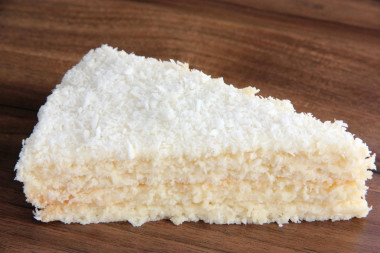
Here is a cake in the section after impregnation. The cakes have become soft, there is no excessive moisture and are well soaked. The cream in combination with such cakes is very harmonious, the coconut is also delicate, the aroma is light, a little creamy. The cake recipe is very successful, and the cream can be used not only for cake.
This cake has several names: "Coconut", "Snowflake", "Raffaello"
Once I didn't have 35% cream whipped / I bought it in the supermarket, but it turned out to be frozen, it happens in Siberia in winter/, there was no time to go to the store and I automatically replaced them with 2 whipped whites with sugar. The experiment turned out to be successful, and the cream is no less delicious, maybe it will come in handy for you sometime.
Cake preparation is conveniently divided into two days, and you can prepare for the holiday in advance. The active cooking time is about 1.5 hours, the rest of the time the dough and then the cake will be in the refrigerator.
A high cake looks very impressive, made of cakes d 18-20cm. Everything is always eaten, for a holiday you can easily cook from a double norm of products. The amount of cream is calculated very accurately, it is enough just right, so increase everything proportionally. The top can be decorated with meringue, meringue, white chocolate, Raffaello candies.
If you follow the step-by-step description and do not replace the products - everything will work out, try it!
Be prepared for the fact that you may need more or less flour than indicated in the recipe. Focus not on the amount of flour, but on the desired consistency of the dough. To avoid mistakes, read about flour and its properties!
Keep in mind that everyone's ovens are different. The temperature and cooking time may differ from those specified in the recipe. To make any baked dish successful, use useful information about the features of ovens !
Caloric content of the products possible in the composition of the dish
- Sour cream of 30% fat content - 340 kcal/100g
- Sour cream of 25% fat content - 284 kcal/100g
- Sour cream with 20% fat content - 210 kcal/100g
- Sour cream of 10% fat content - 115 kcal/100g
- Sour cream - 210 kcal/100g
- Whole durum wheat flour fortified - 333 kcal/100g
- Whole durum wheat flour, universal - 364 kcal/100g
- Flour krupchatka - 348 kcal/100g
- Flour - 325 kcal/100g
- Granulated sugar - 398 kcal/100g
- Sugar - 398 kcal/100g
- Butter 82% - 734 kcal/100g
- Amateur unsalted butter - 709 kcal/100g
- Unsalted peasant butter - 661 kcal/100g
- Peasant salted butter - 652 kcal/100g
- Melted butter - 869 kcal/100g
- Salt - 0 kcal/100g
- Cream 35% - 337 kcal/100g
- Cream 40% - 362 kcal/100g
- Coconut chips - 592 kcal/100g
- Cream cheese with 50% fat content - 349 kcal/100g
- Baking powder - 79 kcal/100g
- Chicken egg - 80 kcal/100g
- White chocolate - 554 kcal/100g

